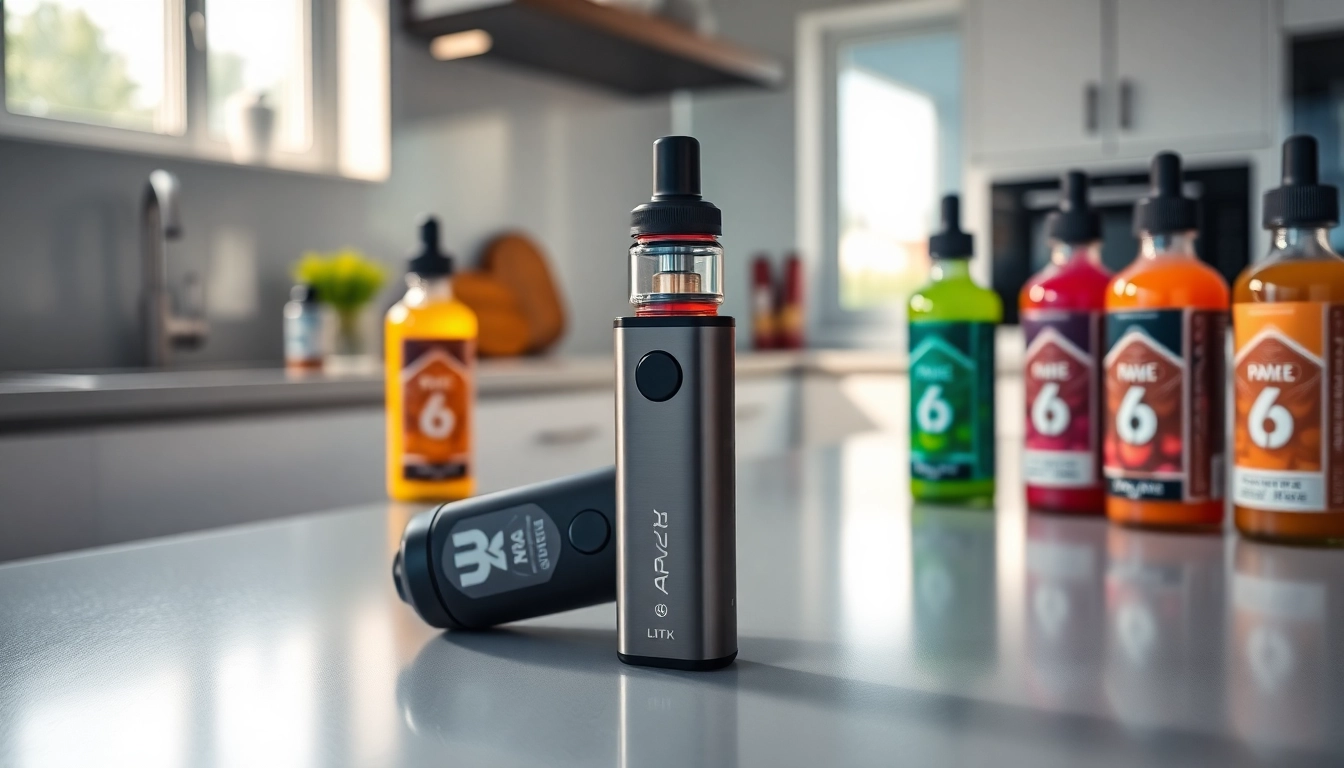
Understanding Free Drum and Bass Sample Essentials
What is a Free Drum and Bass Sample?
A free drum and bass sample refers to audio files that producers can download and use in their musical projects without incurring any costs. These samples are typically used to create the characteristic rhythms and basslines associated with the drum and bass genre, which is known for its fast breakbeats and deep bass. By utilizing free samples, both novice and experienced producers can enhance their tracks, experiment with different sounds, and develop their unique style while maintaining a low budget.
Types of Free Drum and Bass Samples Available
Free drum and bass samples come in various types, each serving a distinct purpose in music production. They can be broadly categorized into the following:
- Drum Loops: Pre-recorded sequences of drums, often at varying tempos, that provide rhythmic foundation.
- One-Shot Samples: Individual sound bites, such as kicks, snares, and hi-hats, used for building custom beats.
- Bass Loops: Lush bassline patterns that can be integrated into tracks to create depth and energy.
- FX Samples: Sound effects like risers, downlifters, and impacts that add excitement and transitions in a track.
- Vocal Samples: Snippets of vocals or phrases that can add texture or theme to a production.
Importance of Quality in Free Drum and Bass Samples
While the availability of free drum and bass samples is plentiful, the quality can vary significantly. High-quality samples are essential as they contribute to the overall sound of a track. Poor quality samples can lead to muddy mixes, lack of definition, and ultimately a less professional sound. Hence, even when choosing free options, producers should prioritize samples that are recorded professionally and are cleanly edited, ensuring they blend well within a mix.
Where to Find Free Drum and Bass Samples
Top Online Resources for Free Drum and Bass Samples
Finding high-quality free drum and bass samples requires knowing where to look. Here are some top resources that offer a variety of free samples:
- Sample Libraries: Websites like Sample Focus and others have extensive collections of royalty-free samples that cater specifically to the drum and bass genre.
- Online Communities: Forums and discussion boards dedicated to music production, such as subreddits focused on drum and bass music, often share links to quality sample packs.
- Music Production Blogs: Various music blogs regularly publish lists and articles featuring the best free samples available online.
Community Shares: Discovering Samples from Fellow Producers
One of the richest resources for free samples often lies within the music production community. Producers frequently share their creations or collections on forums and social media platforms. Engaging with fellow musicians not only allows for sampling their innovations but also fosters collaboration and learning. By participating in community networks, users can stay informed about the latest trends and locate gems hidden within the vast sound library.
Safe Download Practices for Free Drum and Bass Samples
While searching for free drum and bass samples, safety should be a priority. Here are some practices to ensure safe downloads:
- Use Trusted Sources: Stick to known websites and platforms that have established a positive reputation within the music community. Utilizing sources like Free Drum and Bass Sample provides confidence in security and quality.
- Check Licensing Information: Ensure that the downloaded samples are labeled as royalty-free and can be used in commercial projects without legal issues.
- Scan Files for Malware: Always scan downloaded files with antivirus software to avoid harmful software that can infect your system.
How to Use Free Drum and Bass Samples in Your Production
Integrating Samples in Your DAW
Integrating free drum and bass samples into your Digital Audio Workstation (DAW) is a fundamental step in music production. Once you’ve downloaded your chosen samples, here’s how to incorporate them effectively:
- Import Samples: Load them into your DAW’s library or drag and drop them into your project.
- Arrange on the Timeline: Place the samples in a track timeline, ensuring they align with the tempo of your project for cohesive sound.
- Edit for Precision: Use your DAW’s editing tools to trim, slice, or loop samples, adjusting them to fit perfectly into your track structure.
Tips for Arranging Free Drum and Bass Samples
Arranging samples goes beyond mere placement. The goal is to create a dynamic flow within the track:
- Create Variation: Avoid repetition by introducing variations in drum patterns or basslines throughout your track. This keeps the arrangement fresh and engaging.
- Utilize Breakdowns: Strategic breakdowns can provide contrast and allow listeners to anticipate builds, creating a sense of excitement.
- Layering: Combine multiple samples, especially when it comes to drums and bass, to develop a fuller sound that resonates well across playback systems.
Enhancing Your Sound with Sample Processing Techniques
To achieve a polished and professional sound, it’s essential to manipulate and process your samples. Consider employing the following techniques:
- EQing: Equalization allows you to enhance or reduce certain frequencies, fine-tuning your samples to sit well within the mix.
- Compression: Applying compression can help control dynamics, ensuring that your drum hits punch through and that basslines are well-defined.
- Effects Processing: Experiment with effects like reverb, delay, and distortion to add depth and character to your samples.
Best Practices for Organizing Your Free Drum and Bass Samples
Creating an Efficient Sample Library
An organized sample library is vital for quick access and efficient workflow. Here are essential practices for organizing your samples effectively:
- Folder Structure: Create folders based on categories such as drums, bass, FX, and vocals. This allows for easy navigation and retrieval.
- Consistent Naming Conventions: Use clear and descriptive names for your files, which can include BPM, key, or specific characteristics of the sound.
- Regular Maintenance: Periodically review your library for unused samples, deleting or archiving those that no longer serve your projects.
Tagging and Categorizing Your Free Drum and Bass Samples
Tagging adds an essential layer to organization, enabling producers to search quickly and apply specific filters:
- Metadata Tags: Add metadata to your samples, including attributes like tempo, style, and instrument type, which enhance searchability.
- Visual Cues: Consider color-coding folders or files according to category or personal preference for faster identification.
Maintaining Sample Quality Over Time
As your sample library grows, maintaining quality becomes critical. Here are practices to ensure your samples remain usable:
- Monitor Usage: Track which samples you frequently use versus those that rarely see play. Ensure your most valuable samples are easy to access.
- Update Regularly: As new sounds become available, regularly incorporate fresh samples while retiring outdated ones that no longer reflect your style.
Maximizing Your Tracks with Free Drum and Bass Samples
Layering Techniques for Richer Sounds
Layering is one of the most effective techniques for creating rich soundscapes in drum and bass music. Here’s how to maximize this technique:
- Combine Similar Sounds: Layering drum hits with slight variations in timing and pitch can create a more organic and complex rhythm.
- Mix Different Textures: Use a combination of acoustic and synthetic samples to construct a unique sound palette that remains intriguing throughout your track.
Mixing and Mastering Tips for Free Drum and Bass Samples
A polished mix is essential for any track. Here are vital mixing and mastering tips:
- Balance Levels: Achieve an overall balanced mix by adjusting the volume levels of each track, ensuring no element overpowers another.
- Proper Panning: Use stereo panning to create space in your mix, allowing individual sounds to shine without clashing with others.
- Mastering Techniques: Consider proper mastering techniques to ensure your track sounds good across various platforms and systems, including dynamic range management and loudness normalization.
Showcasing Your Tracks with Free Drum and Bass Samples
Once you’ve created tracks using free drum and bass samples, showcasing your work is crucial for gaining recognition:
- Social Media Presence: Share snippets of your tracks on social media channels and engage with audiences who appreciate your genre.
- Networking with Other Producers: Connect with like-minded producers online to share feedback and promote each other’s work.
- Submissions to Compilation Albums: Identify opportunities to submit your music to compilation projects or playlists for wider exposure.






